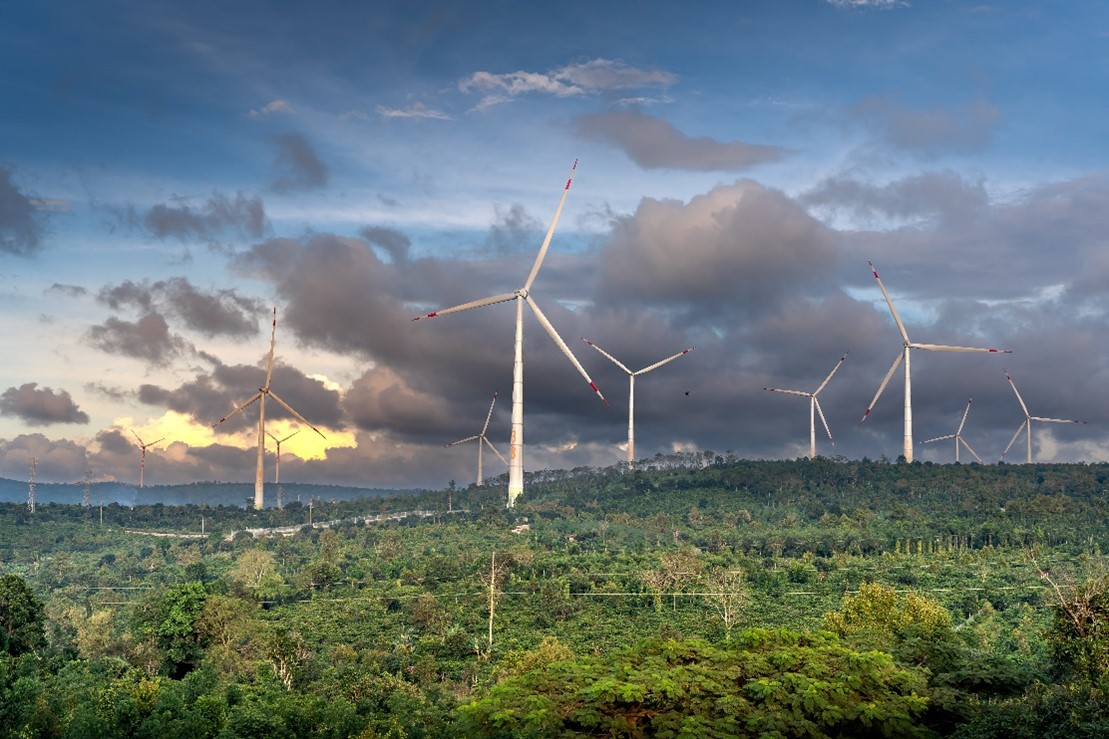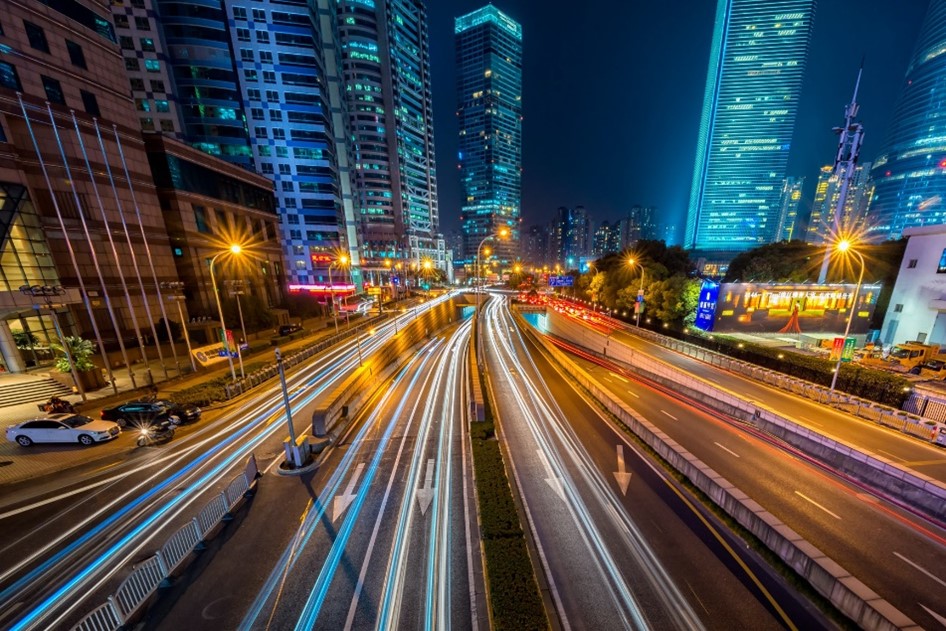Published 31st May 2023
Impacts on Infrastructure Investing in Changing Environments
In our earlier series, we mentioned that infrastructure investing may be perceived as “boring and unexciting”. However, it still offers investors the best of both worlds by providing stable and low maintenance needs as well as predictable investment risk profiles, coupled with consistent returns whilst navigating through choppy economic cycles.
Notwithstanding the above, infrastructure investing, in recent years, has been impacted and disrupted by a turn of events involving the acceleration of revolution and transition in the energy, digitalisation, and mobility sectors. On the back of a prolonged and unpredicted COVID-19 pandemic, stickier than expected inflation, increasing interest rate environment, waning business and investor sentiments as well as the looming threat of a global recession, the past 2-3 years have impacted and shaken almost all sectors.

While the investments poured into infrastructure were more resilient in withstanding the economic environment pressures than other types of investments, infrastructure investors are not immune to the turbulence of sudden and structural changes in the economic environment.
Adapting for Sustainability

The significant decarbonisation and transition within the energy sector towards a net-zero economy, coupled with the enhanced focus on digitalisation have introduced new aspects and dynamics to the existing energy infrastructure landscape, that had all, for decades, appeared to be almost resistant to systemic changes. However, we are seeing sharp shifts in the energy infrastructure sub-asset class. Investors are correspondingly following suit and are re-allocating and redirecting capital to accelerate the transition to a net-zero economy.
With the evolving outlook and the unabated pace of energy transition, investors are analysing and scrutinising their portfolios to ensure that the invested assets are future proofed and benchmarked for the appropriate risks and returns today. Some investments which were once viewed as low-risk investments / assets, may carry a very different risk profile than previously envisaged today.
For example, with the “2030” - “2050” energy targets, the entire Oil & Gas / fossil fuel sector and its related value chain and ecosystem could potentially be phased out from the overall economy quicker than expected. Industry players within the fossil industry must find ways to adopt and implement on technologies focusing on mitigating environmental impacts, improving efficiency and reducing emissions to ensure its relevance. Unless such sustainable measures are undertaken, these assets would continue to face heightened risk of obsolescence.
On the other hand, the emphasis on digitalisation is taking the markets by storm. Driven by the social changes and a different way of life post-pandemic, remote working preferences by employees have significantly increased. At the same time, allowances of such work-from-home arrangements by employers (noting this was almost a non-available option pre-pandemic), have aided in pushing forward connectivity, information and technology infrastructure assets in a large scale.
Hence, investors had to grasp the situation where the profiles of these assets had shifted and quickly adapt and adjust their portfolios accordingly.
Creation of Sustainable Investment
Notably, the revolutions in the environment and economic changes have presented opportunities in sustainable infrastructure investments.
Many new generation, sustainable infrastructure investments have surfaced in a fairly expedient manner. These includes the likes of:
- Rapid adoption of Electric Vehicles (EV) and implementation of charging network infrastructures globally
- 5G telecommunication network infrastructure
- Surging demand for data centres
- Battery and energy storage solutions (BESS)
- Push for hydrogen and its distribution network
- Smart city technologies and initiatives, particularly in the electrification of land transportation
Many of these new-generation assets offer characteristics which an infrastructure investor would be looking for, namely protective market and regulatory controls, minimal operational risk, and stable cash flow generation, which are not linked to macro-economic factors or conditions beyond the control of the asset owners.
Nonetheless, infrastructure investors have to be patient and be willing to accept a relatively lengthy gestation period of significant capital investment and expenses as such technologies develop and mature. This may result in negative cash flow outlook during the development and gestation period. Investors should acknowledge and accept the risks surrounding the continuous development of progressive technology substitutes along the way and tackling commercial risks in an agile way until technology standards and “norms” are set. Hence, investment into these new types of infrastructure assets requires taking on higher levels of risks for a longer-run of returns.
Smart Cities as a Sustainable Infrastructure

As the world population living in the cities continue to increase at an accelerating pace (according to the United Nations¹, 60% of world population is estimated to live in urban areas by 2030, an increase from 55% in 2018,), cities would also need to adjust and upgrade to cope with the increase in population in a sustainable manner. Furthermore, this challenge is further compounded by the impact of another significant trend: the aging population, whereby people aged 65 and above is expected to grow from 703 million in 2019 to 1.5 billion in 2050, according to the United Nations.
As a result, investments are directed into city developments to improve transportation systems, healthcare, connectivity, public amenities and safety, while reducing waste, emissions and energy consumption, giving rise to the mushrooming of "Smart Cities". The urban planning, re-developments and improvements to transform a city into a "Smart City” would be driven by a mix of upgrades in existing infrastructures as well as incorporation and implementation of new technologies and innovations, such as leveraging on enhanced interconnected networks, the implementation of the Internet of Things, real-time data analysis, among others. By incorporating smart systems, cities can effectively monitor, manage and respond to the evolving needs of the population in a timely and effective manner.
We have seen smart cities being developed in the following ways:
- Enhanced development works on existing cities through implementation of technologies and upgrade of infrastructure networks. This would be the most common approach and witnessed in international cities like London, Singapore, Dubai, Amsterdam, among others.
- Development and construction of a totally new city, such as Neom in Saudi Arabia, Masdar City in the United Arab Emirates and Songdo in South Korea.
Benefits of Smart Cities:
- Enhanced quality of life: Smart cities prioritise citizen-centric services, including improved transportation networks, low-latency networks, smart governance, accessible healthcare, and efficient waste management, resulting in a higher quality of life for residents.
- Resource optimisation: Smart grids, intelligent transportation systems, and optimised resource management contribute to reduced energy consumption, waste generation, and traffic congestion leading to environmental sustainability.
- Improved safety and security: Smart surveillance systems, improved emergency response mechanisms, and predictive analytics help mitigate risks, enhance public safety, and enable faster disaster response.
- Economic growth and efficiency: Smart cities attract investment, foster innovation, and create job opportunities in emerging sectors, leading to economic growth and increased productivity.
Wide Financing Gap, Especially in Developing Countries
According to OECD², the COVID-19 pandemic has had a profound impact on the ability of developing countries to achieve the Sustainable Development Goals (SDGs). In 2020, the SDG financing gap in these countries increased by 56%, reaching a staggering USD3.9 trillion. The widening of the financing gap is primarily due to the sharp decline in government revenues.
Specifically, government revenue available after debt service repayment fell by USD689 billion, accounting for more than 80% of the overall decline. Before the pandemic, government revenue represented over 50% of developing countries' financing mix. Additionally, developing countries' government expenditure increased in response to the COVID-19 emergency. This emergency spending has added to the financing burden in countries already struggling to mobilise domestic revenues as well as other external private flows. As such, the financing gap remains a significant challenge for developing countries to achieve the SDGs.
As the world becomes more environmentally conscious, the need for sustainable infrastructure is inexorable. Countries and regions around the world are investing heavily in greener infrastructure such as smart cities, renewable energy and public transportation. This presents a great opportunity for investors who want to make a positive impact while also generating returns.
In conclusion
The energy transition to a net-zero economy provides a compelling investment backdrop for sustainable infrastructure, considering the urgency to secure a liveable future, the size and financing gap in the market (especially in developing countries), as well as the risk-reward profile it presents. However, finding smaller transactions (<USD200 million) at reasonable valuations can be challenging. In some cases, EBITDA multiple exceeds 20x. To overcome these obstacles and actively participate in the energy transition, investors must consider a creative and proactive approach towards investing. By sourcing deals through alternative channels, taking a longer investment horizon, and embracing a broader perspective, investors can position themselves to capitalise on the vast potential and long-term benefits of sustainable infrastructure investments. For investors with limited resources and/or experience in the infrastructure space, infrastructure funds offer the benefits of direct investments, as well as creating value via mitigation of risks through the fund manager’s higher operational involvement, its active monitoring and evaluation, as well as its deal sourcing capabilities and networks.
¹Source: United Nations, Policies on spatial distribution and urbanization have broad impacts on sustainable developments (link: https://www.un.org/development/desa/pd/sites/www.un.org.development.desa.pd/files/undes_pd_2020_popfacts_urbanization_policies.pdf)
²Source: OECD, Global Outlook on Financing for Sustainable Development 2023 (link: https://www.oecd-ilibrary.org/sites/fcbe6ce9-en/1/2/5/index.html?itemId=/content/publication/fcbe6ce9-en&_csp_=324f5278c3cd15483ec0c51666af7400&itemIGO=oecd&itemContentType=book)
Farosson Group Disclaimer
This publication and/or the materials herein prepared are solely for information or educational purposes only and should not be treated as research or advice. This publication may not be published, circulated, reproduced, distributed, transmitted, or otherwise communicated to any other person, in whole or in part, without our express written consent. No guarantee, representation or warranty, either expressed or implied, is provided in relation to the accuracy, completeness or reliability of the information contained herein, nor is it intended to be a complete statement or summary of the markets or developments referred to in this publication and/ or the materials herein.
This publication and/ or the materials herein should not be regarded by the recipients as a substitute for the exercise of their own judgement and the recipients should not act on the information contained herein without first independently verifying its contents. Any opinions or estimate expressed in this report are subject to change without notice and may differ or be contrary to opinions expressed by others as a result of using different assumptions and criteria. Farosson Pte. Ltd., Farosson Capital Pte. Ltd. and its related companies (collectively known as “Farosson Group”), have not given any consideration to and has not made any investigation of the investment objectives, financial situation or particular needs of the recipient, and accordingly, no warranty whatsoever is given and no liability whatsoever is accepted for any loss arising whether directly or indirectly as a result of the recipient acting on such information or opinion or estimate.
This publication may contain projections, estimates, forecasts, targets, opinions, prospects, results, returns and forward-looking statements ("forward-looking statements") with respect to Farosson Group and its related group of companies future performance, position and financial results. Examples of forward-looking statements include statements made or implied about the Farosson Group's and its related group of companies’ strategy, estimates of sales growth, financial results, cost savings and future developments in its existing business and the Farosson Group's and its related group of companies’ financial position. Statements of future events or conditions in this publication, including projections, sustainability framework plans, sensitivity analyses, expectations, estimates, the development of future technologies, and business plans, are forward-looking statements. Actual future results or conditions, including: demand growth and relative energy mix across sources, economic sections and geographic regions; the impacts of waves of COVID-19; the impact of new technologies; changes in law or government policy, the actions of competitors and customers; including the occurrence and duration of economic recessions; unforeseen technical or operational difficulties; the pace of regional or global recover from the COVID-19 pandemic and actions taken by governments or consumers resulting from the pandemic.
Farosson Group is under no obligation to update or keep current the information contained herein. In no event and under no legal or equitable theory, whether in tort, contract, strict liability or otherwise, shall Farosson Group be liable for any damages, including without limitation direct or indirect, special, punitive, incidental or consequential damages, losses or expenses (including loss of profits) arising in connection with the use of or reliance on the information contained herein, even if notified of the possibility of such damages, losses or expenses.
